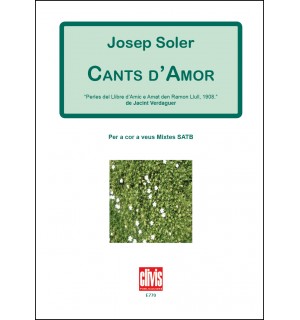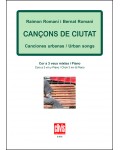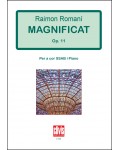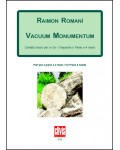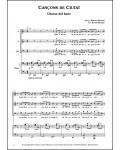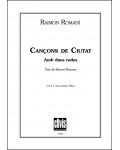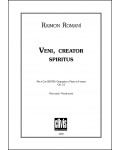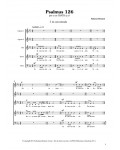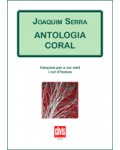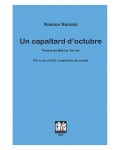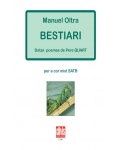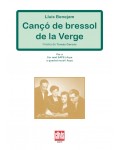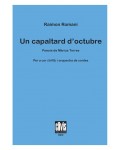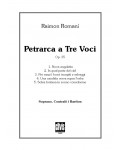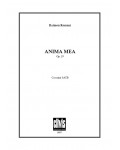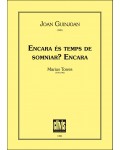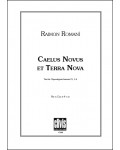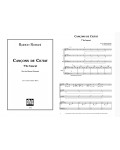
No products
Prices are tax included
Product successfully added to your shopping cart
There are 0 items in your cart. There is 1 item in your cart.
- English
- Castellano
- Català
Cants d'amor
E770
New product
The Love Songs reflect the vocal music that Soler wrote between 2011 and 2013
| Period | XXIth Century |
| Subheading / Parts | "Perles del Llibre d'Amic e Amat d'en Ramon Llull, 1908" |
| Instruments | Mixed Choir (SATB) |
| Text language | Catalan |
| Pages | 34 |
| Contents | Complet sheet music |
| ISMN | 979-0-3502-1064-8 |
| Remarks | Parts cor SATB (ref.C0537); TBB (ref.C0538); SSAA (ref.C0539) |
| Edition | Printed |
The Love Songs reflect the vocal music that Soler wrote between 2011 and 2013 based on two sources: the Book of the Lover and the Beloved (ca. 1276) by Ramon Llull and the Pearls from the Book of the Lover and the Beloved by Ramon Llull,which Jacint Verdaguer wrote in the last years of his life, under the influence of what he believed to be the golden tome of Catalan literature, which was posthumously published in 1908. Llull’s influence on Soler is also quite considerable. An example of this is the fact that these pieces exhibit the free and creative approach of the poetic and mystic atmosphere of Llull and Verdaguer, using texts in Catalan which is uncommon in an oeuvre dominated by texts in Latin, German, English and French. Soler sees his work as a continuation of this tradition of medieval liturgical drama, in which the music envelops the text because it is the message that he wants to clearly convey. Hence in his vocal music, which holds a prominent place in this production, Soler determines the treatment of the melody to the intelligibility of the text, has noted by Roura. The same is the case with this work: the poetry of Llull and Verdaguer needs to be transmitted clearly, as in the Nursery Song (1997) for choir and organ based on the second stanza of Verdaguer’s Song to the Virgin Mary, “How beautiful is thy bud-like cheek...!” In this case, not only are the melodic treatment of the voices and the polyphonic textures conditional upon the chosen text, but so is the very structure of each of these Love Songs. What distinguishes each one, beyond the tessituras chosen by the composer – with the peculiarity of the treble voices for verse 26 of the Book of the Lover and the Beloved “The birds sang at dawn...”– are the interval patterns and their transformations in each of the sections.
The Book of the Lover and the Beloved is the great book of Llullian mystic poetry. As Blanquerna says in the Book of Evast and Blanquerna, the Lover represents the faithful and the Beloved is the divinity. An impossible dialogue, because God does not answer. It is only in poetry and music that the Beloved responds to the words of the Lover, even when it cannot find the words (“The Beloved takes the words from the Lover, unable to speak to he who loves him so”). Drunk with divinity, only the poet and musician is crazy for God, thanks to the mediation of love. In this case, the highest form of art at the confluence of music and speech.
Diego Alejandro Civilotti

